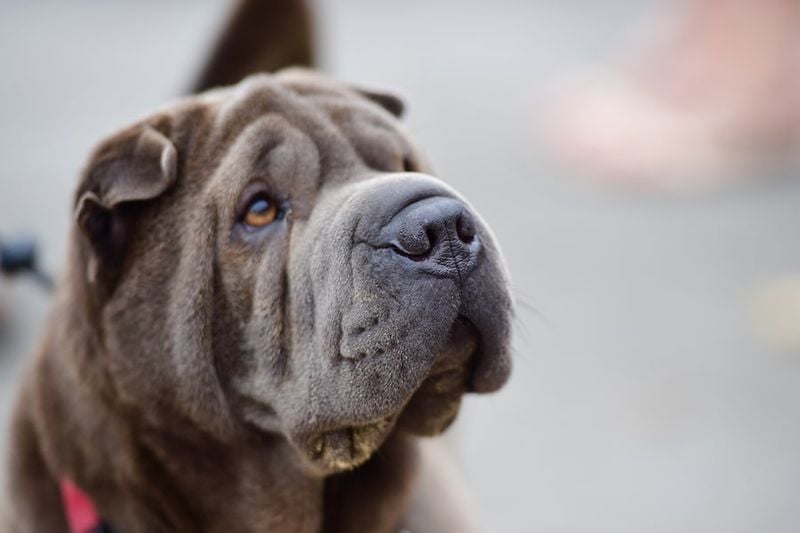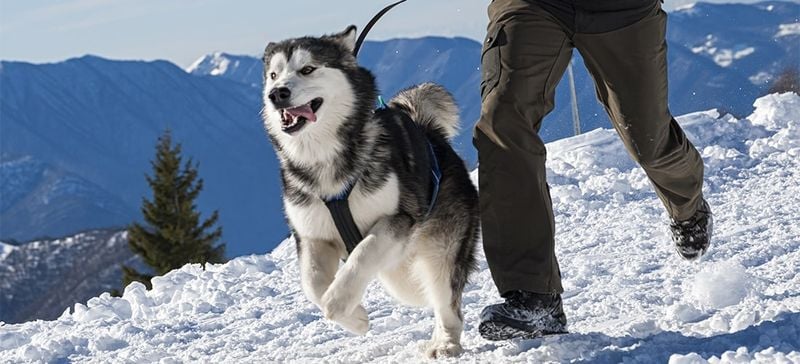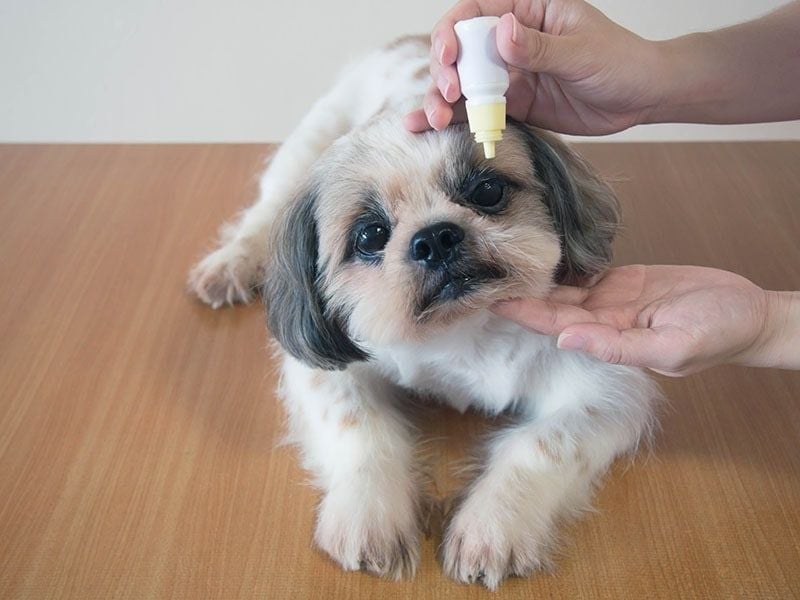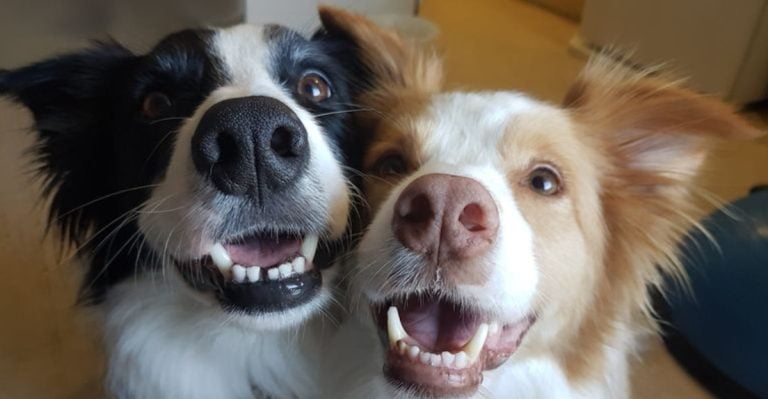Vets Reveal the 15 Dog Breeds They’d Never Own Themselves
Ever wondered which dog breeds make even the experts think twice? Veterinarians see firsthand the health challenges, behavior issues, and special needs that certain breeds face throughout their lives.
While every dog deserves love, vets often develop preferences based on their professional experiences with different breeds.
Here’s an insider look at which dogs veterinary professionals might admire in the clinic but would hesitate to welcome into their own homes.
1. English Bulldog: Breathing Battles and Vet Bills
English Bulldogs charm with their wrinkled faces and gentle temperaments, but their health concerns give many veterinarians pause. Their pushed-in faces create lifelong respiratory struggles that often require surgery.
Skin infections develop in those adorable wrinkles without constant cleaning. Joint problems and overheating issues plague these pups, especially during warmer months when even short walks become dangerous.
Most Bulldogs need cesarean sections to deliver puppies, adding to their already expensive care costs. While these lovable tanks win hearts with their personalities, vets who’ve treated countless Bulldogs understand the heartbreak and financial burden their medical needs create.
2. Cavalier King Charles Spaniel: Heartbreaking Health Concerns
Those soulful eyes and silky ears hide a heartbreaking reality that makes veterinarians hesitant to bring Cavaliers home. Nearly all develop mitral valve disease by age 10, with many showing symptoms much earlier, leading to heart failure despite the best medical care.
Syringomyelia, a painful neurological condition where the skull is too small for the brain, affects many Cavaliers. Watch videos of affected dogs, and you’ll see them scratching at phantom pain near their necks and shoulders.
Eye problems, hip dysplasia, and ear infections round out their health challenges. Vets admire their sweet temperaments but can’t ignore knowing exactly how these beautiful dogs often suffer later in life.
3. Dalmatian: Spotted Troubles Beyond the Movies
Those iconic spots hide serious genetic issues that make veterinarians think twice about Dalmatian ownership. A unique urinary system quirk causes about 80% of males and 10% of females to form painful bladder stones, often requiring emergency surgery.
Deafness affects nearly 30% of Dalmatians, with some born completely deaf. Their high energy needs clash with their joint problems, creating a frustrating combination for both dog and owner.
Despite their Disney fame, many Dalmatians display nervous temperaments that require expert handling and socialization. Veterinarians who’ve treated stone blockages at 2 AM or counseled families with hearing-impaired puppies understand why these spotted dogs, though beautiful, often face abandonment after the movie-inspired appeal wears off.
4. Chow Chow: Fluffy but Frightening Health Record
Behind that magnificent lion-like mane hides a breed that makes many veterinarians nervous both medically and behaviorally. Their deep-set eyes frequently develop entropion, a painful condition where eyelids roll inward, scratching the cornea with every blink.
Hip and elbow dysplasia plague these fluffy giants, while their thick double coats require extensive grooming to prevent painful matting and skin infections. Many Chows develop strong guard dog instincts that make veterinary exams challenging without sedation.
Their independent, sometimes stubborn personality often clashes with training efforts. Vets who’ve treated Chows know their distinctive blue-black tongues come with distinctive health challenges and temperament concerns that require experienced owners with deep pockets.
5. Shar Pei: Wrinkles Hiding Painful Conditions
Those trademark wrinkles create endless skin problems that veterinarians witness regularly. Shar Peis often develop a unique condition called Shar Pei Fever, causing recurring high temperatures and joint pain that can lead to kidney failure.
Their tiny ear canals become infection hotspots, while those adorable wrinkles harbor yeast and bacteria without daily cleaning. Many suffer from entropion, where eyelashes painfully rub against the cornea, requiring surgical correction.
Shar Peis typically show strong guarding tendencies and independence that make them challenging patients. Veterinarians appreciate their ancient history and loyal nature but understand the medical interventions many require throughout their lives, making them hesitant to take on these wrinkled companions personally.
6. Great Dane: Gentle Giants with Short Lifespans
Great Danes capture hearts with their gentle nature, but veterinarians know their heartbreakingly short lifespans average just 6-8 years. Bloat, a life-threatening stomach condition, strikes Danes more than any other breed, often requiring emergency surgery costing thousands.
Heart problems, particularly dilated cardiomyopathy, cut many Dane lives tragically short. Their massive size makes arthritis and joint problems almost inevitable as they age, often requiring expensive medications.
Even routine care becomes challenging – medications cost more for 150-pound dogs, and lifting an injured Dane requires multiple people. Veterinarians admire these majestic giants but hesitate to bring home dogs whose heartbreaking health issues and abbreviated lifespans they’ve witnessed repeatedly in practice.
7. Alaskan Malamute: Working Dogs Needing Endless Exercise
Malamutes’ wolf-like appearance and friendly personalities hide exercise requirements that exhaust even active owners. These working dogs were bred to pull heavy sleds across Arctic terrain all day – a simple walk around the block feels like prison to them.
Without proper outlets, they become destructive, often dismantling homes and yards out of boredom. Their thick double coats shed constantly, creating fur tumbleweeds throughout the house despite regular grooming.
Hip dysplasia affects many Malamutes, creating a cruel irony where these exercise-craving dogs develop painful joint conditions. Veterinarians who’ve counseled frustrated owners about destroyed furniture, behavioral problems, and appropriate exercise needs understand why these beautiful northern dogs, though magnificent, aren’t suitable for typical home environments.
8. Pekingese: Breathing Struggles in a Tiny Package
Pekingese dogs carry the dignity of their imperial Chinese origins, but veterinarians see beyond their regal appearance to serious health concerns. Their extremely flat faces create lifelong breathing difficulties, with many requiring surgery just to breathe normally during mild exercise or warm weather.
Bulging eyes prone to injury and infection sit in shallow sockets, sometimes actually popping out during play or excitement. Their long, luxurious coats demand daily grooming to prevent painful matting.
Back problems plague many Pekes due to their unusual body structure, leading to pain, paralysis, or expensive surgeries. Veterinarians appreciate their historical significance and loyal personalities but cannot ignore how breeding for extreme features has created dogs that struggle with basic functions like breathing and walking comfortably.
9. Doberman Pinscher: Heart Issues Hiding in Athletic Bodies
Dobermans project strength and athleticism, but veterinarians know about the devastating heart condition silently affecting this breed. Dilated cardiomyopathy strikes roughly 50% of Dobermans, often showing no symptoms until sudden collapse or death.
Von Willebrand’s disease, a blood clotting disorder, makes even minor surgeries or injuries potentially dangerous. Their high exercise needs combined with a strong protective instinct requires experienced handling and consistent training.
Dobermans often develop anxiety issues that manifest as destructive behaviors when left alone. Veterinarians admire their intelligence and loyalty but hesitate to own a breed where regular echocardiograms become necessary and where many dogs, despite appearing perfectly healthy, face dramatically shortened lifespans due to genetic heart disease.
10. Shih Tzu: Tiny Dogs with Oversized Health Problems
Shih Tzus win hearts with their flowing coats and affectionate personalities, but veterinarians see the health challenges beneath those adorable faces. Their bulging eyes frequently develop corneal ulcers or even pop out of their sockets during rough play.
Dental disease strikes almost all Shih Tzus, with many losing teeth by middle age despite regular care. Their pushed-in faces create breathing difficulties that worsen in hot weather or during exercise.
Luxating patellas (knee caps that slip out of place) cause many to develop a characteristic skip in their walk that eventually leads to arthritis. Veterinarians appreciate their loving temperaments but know firsthand how these little dogs require specialized care for their eyes, teeth, airways, and joints throughout their lives.
11. German Shepherd: Working Dogs with Working Hips
German Shepherds exemplify loyalty and intelligence, but veterinarians witness the devastating hip and spine problems affecting this beloved breed. Hip dysplasia affects over 20% of German Shepherds, creating painful arthritis that often begins in young adulthood.
Degenerative myelopathy, a progressive spinal cord disease similar to ALS in humans, causes many to lose hind limb function as they age. Their high exercise and mental stimulation requirements mean bored Shepherds often develop destructive or anxious behaviors.
Pancreatic enzyme insufficiency and chronic digestive issues affect many GSDs, requiring lifelong medication with every meal. Veterinarians respect these dogs’ working abilities and devotion but hesitate to personally take on a breed where mobility problems and specialized care become almost inevitable despite responsible breeding efforts.
12. Toy Poodle: Small Size, Big Dental Problems
Toy Poodles offer intelligence in a portable package, but veterinarians regularly see the dental nightmares affecting these tiny dogs. Their small mouths crowd teeth together, creating perfect hiding spots for tartar and bacteria despite regular brushing.
Luxating patellas (slipping kneecaps) cause many Toy Poodles to develop a characteristic hopping gait that eventually leads to arthritis. Their high energy levels combined with fragile legs create a concerning combination for injury.
Progressive retinal atrophy causes many to gradually lose vision, while their curly coats require professional grooming every 4-6 weeks to prevent painful matting. Veterinarians appreciate their remarkable intelligence but understand the specialized dental care, orthopedic concerns, and grooming commitments these sophisticated little dogs require.
13. Beagle: Howling Health Concerns
Beagles charm with their expressive eyes and playful personalities, but veterinarians regularly treat the unique health issues affecting these scent hounds. Their food obsession leads to obesity in over 60% of Beagles, creating joint problems and diabetes that shorten lifespans.
Epilepsy affects many Beagles, requiring lifelong medication with potential side effects. Their long, floppy ears trap moisture, making ear infections a recurring nightmare for many owners.
Intervertebral disc disease strikes many Beagles, sometimes causing sudden paralysis requiring emergency surgery. Veterinarians enjoy their friendly nature but hesitate to take home a breed known for both health concerns and challenging behaviors like howling, escape artistry, and a stubborn streak that makes training consistently difficult.
14. Boxer: Cancer Concerns in Athletic Bodies
Boxers captivate with their playful antics and expressive faces, but veterinarians know the heartbreaking cancer statistics affecting this breed. Various forms of cancer strike Boxers at nearly twice the rate of other dogs, with many diagnosed before reaching middle age.
Heart conditions, particularly arrhythmogenic right ventricular cardiomyopathy, affect many Boxers, sometimes causing sudden death without warning signs. Their short muzzles create breathing difficulties that worsen during exercise or heat.
Degenerative myelopathy causes many older Boxers to gradually lose hind limb function. Veterinarians adore their goofy personalities and devotion to families but understand the heartbreak of loving a breed where cancer diagnoses and cardiac screenings become an expected part of routine care.
15. French Bulldog: Instagram Famous but Veterinary Infamous
French Bulldogs win social media popularity contests with their bat ears and expressive faces, but veterinarians see the serious health challenges behind those adorable photos. Their extremely flat faces create breathing difficulties so severe that many cannot exercise normally or tolerate warm weather.
Spinal malformations affect numerous Frenchies, causing pain or paralysis that may require expensive surgery. Their narrow hips make natural breeding impossible – nearly all require artificial insemination and cesarean sections.
Skin allergies plague many French Bulldogs, creating chronic itching, infections, and discomfort requiring lifelong management. Veterinarians understand why these charismatic little dogs capture hearts online but recognize that their cute appearance comes with structural problems that impact their quality of life and often require specialized veterinary intervention.





















